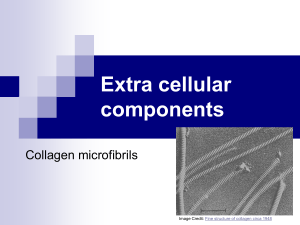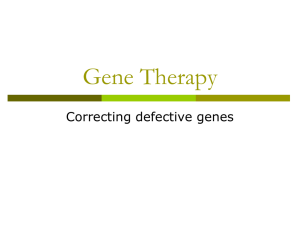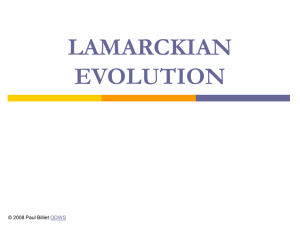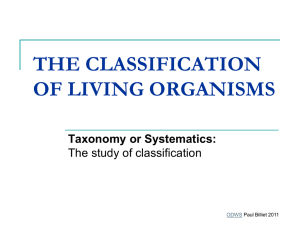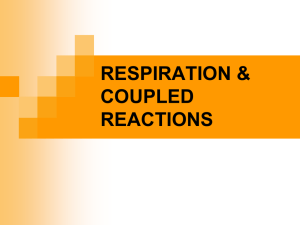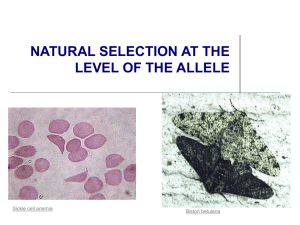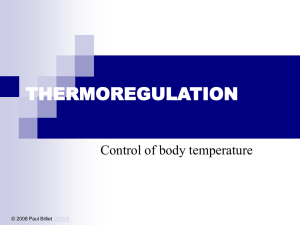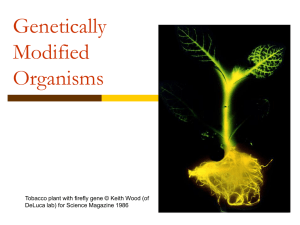The First Cells
advertisement
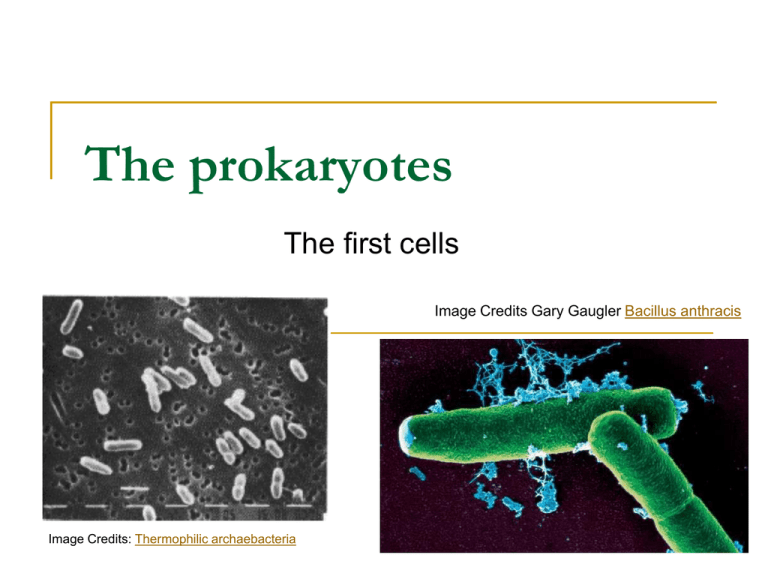
The prokaryotes The first cells Image Credits Gary Gaugler Bacillus anthracis Image Credits: Thermophilic archaebacteria Origins Evidence for prokaryotic cells is found as early as 3.9 billion years ago The prokaryotes had the Earth to themselves for another 2.4 billion years Prokaryotes show an extraordinary diversity of biochemistry Structurally prokaryotes are quite small and simple (1-10µm in diameter). © 2010 Paul Billiet ODWS Where? “(a) warm little pond, with all sorts of ammonia and phosphoric salts, lights, heat, electricity, etc. present, so that a protein compound was chemically formed ready to undergo still more complex changes” Charles Darwin (1871) organic compounds would accumulate in the Earth's oceans until they "reached the consistency of hot, dilute soup." JBS Haldane (1929) Deep sea hydrothermal vents Volcanoes Outer space. © 2010 Paul Billiet ODWS Panspermia (aka cosmozoan) Life came from somewhere else and seeded Earth The support for this depends up on evidence that life exists elsewhere than on Earth and the evidence that it may travel through open space. © 2010 Paul Billiet ODWS Exobiology Mars Viking Probe (1976) revealed conflicting evidence of life Mariner Probe (1997) did not reveal any more evidence Tantalising evidence of water on Mars Venus has inhospitable conditions (surface temperatures of over +400°C). Viking Image Credit NASA Water and geothermal energy is the key The moons of Jupiter and Saturn could provide the right conditions Europa appears to be covered in ice Io shows volcanic activity Titan has organic molecules present. Europa Image Credit NASA Life can survive in outer space Bacteria, inadvertently left on a lunar probe Collected and cultured successfully after nearly 2 years in space Meteorites of Martian origin show that its early atmosphere would have been similar to Earth’s early atmosphere They also showed (debatable) evidence of bacteria transported by meteorites. Surveyor 3 Image Credit NASA Alien Earth Life has been shown to exist on Earth in very inhospitable conditions that could exist on other planets Antarctic dry valleys Mid-ocean ridges Image Credit: Antarctica Image Credit: Earth Science Australia Earliest evidence of life The origin of the Earth itself is estimated as 4.5 billion years Earliest evidence of life processes 3.9 billion years ago This leaves little time for biochemical evolution. © 2010 Paul Billiet ODWS The eternal question If it can be shown that life came from an extraterrestrial source the question still remains… How did life evolve in the first place? © 2010 Paul Billiet ODWS The poisonous gas …Oxygen The amount of free oxygen in the atmosphere increased after the evolution of photosynthesis O2 appeared from about 2.4 billion years ago and reached about 21% 1 billion years ago Obligate anaerobes either became extinct or found niches where oxygen is absent. Image Credit: Stromatolites, Shark Bay Australia The Great Oxidation Event © 2010 Paul Billiet ODWS Evidence Iron is soluble in water where there is no oxygen Iron rich water is produced by volcanic activity Iron rich water entered shallow sunlight seas Sunlight permitted cyanobacteria to photosynthesize and produce O2 O2 combined with the iron and formed rust (iron III oxide) Removing the O2 from the water Methane produced by methanogen bacteria also reduced the oxygen levels This carried on until the rate of photosynthesis was so great, free O2 appeared in the atmosphere (about 2.4 bn years ago) This may have been precipitated by a shortage of nickel (Ni) Ni is used in the enzymes of methanogens © 2010 Paul Billiet ODWS Image Credit: P.Hoffman The evolution of the eukaryotes A third possibility was open with the teaming up of microbes Endosymbiosis – a large anaerobic cell teams up with an aerobic cell The aerobic prokaryote became a mitochondrion Eukaryotic cells were formed, bigger and more complex, eventually forming multicellular organisms. © 2010 Paul Billiet ODWS The evidence for endosymbiosis Certain eukaryotic organelles have their own DNA Single naked loop of DNA, like the prokaryotes The amount of hereditary information is a lot less than free-living prokaryotes These organelles have their own ribosomes Smaller (70S) than those in the cytoplasm (80S) The ribosomes of mitochondria and chloroplasts are the same size as those in prokaryotes The protein synthesis of these organelles is semiindependent of that taking place in the cytoplasm It is inhibited by the same antibiotic that affects prokaryotes (chloramphenicol). © 2010 Paul Billiet ODWS The structural evidence These organelles are found in membrane envelopes As though they were captured in a vacuole or vesicle by a larger cell These organelles are about the same size as a prokaryotic cell. © 2010 Paul Billiet ODWS Image Credit: Mitochondrion Mitochondria These represent an aerobic prokaryote that took up residence in a larger cell These are found in all the eukaryotic kingdoms (plants, animals, fungi and protoctista). © 2010 Paul Billiet ODWS Image Credit: Mitochondrion Chloroplasts These represent a cyanobacterium type of prokaryote that was trapped in ancestral plants and some protoctista Image Credit: Cyanobacterium heterocyst © 2010 Paul Billiet ODWS
